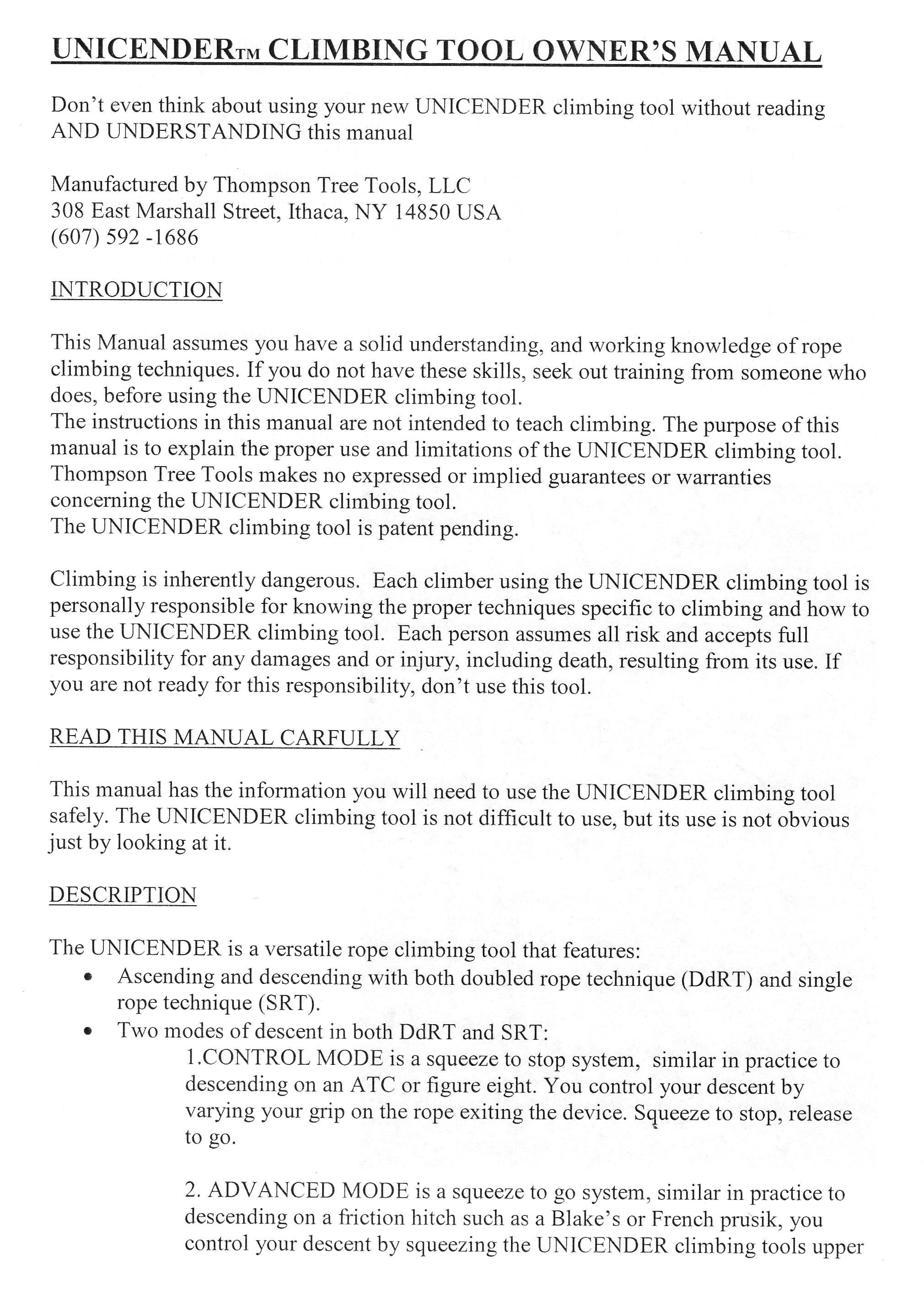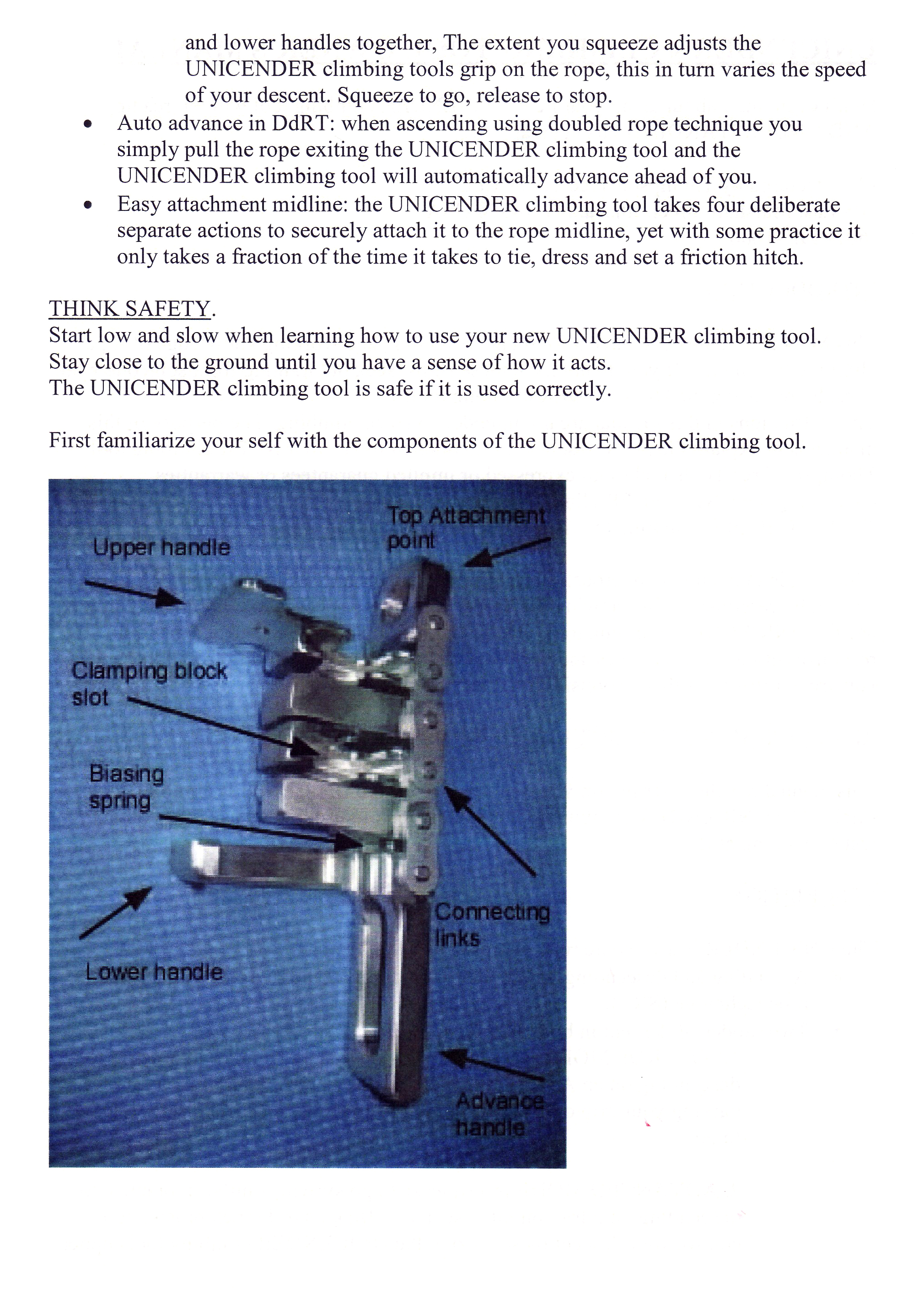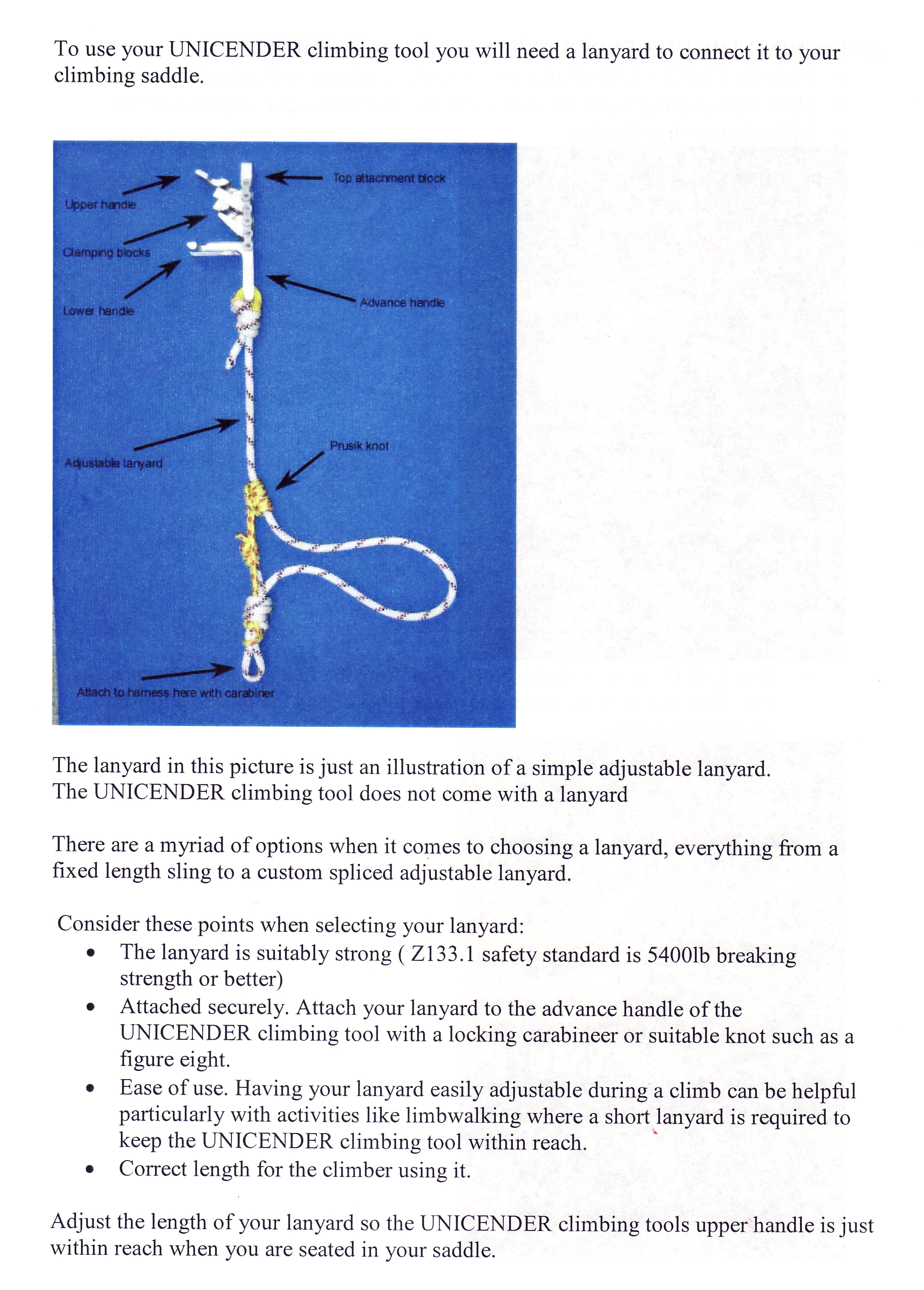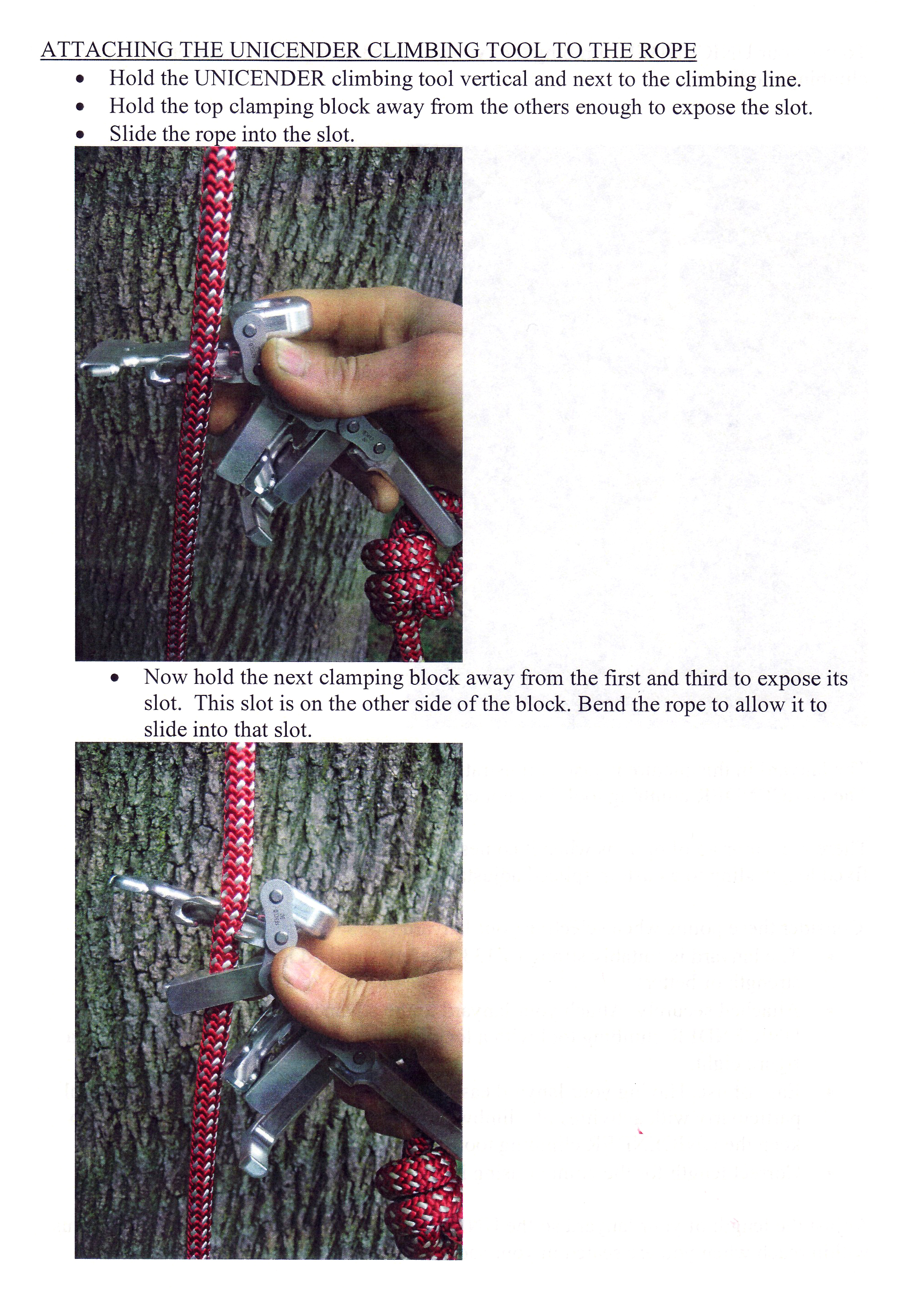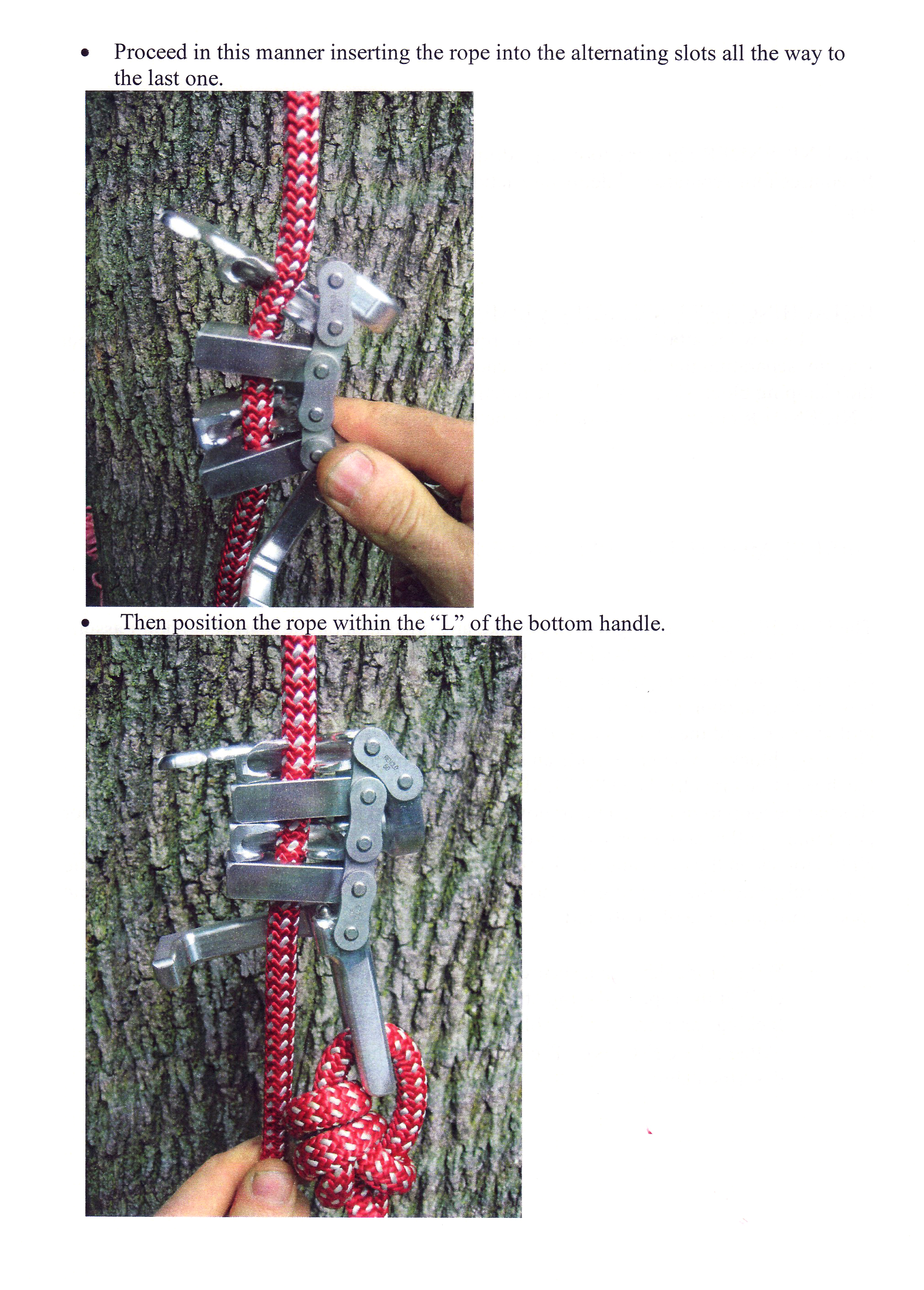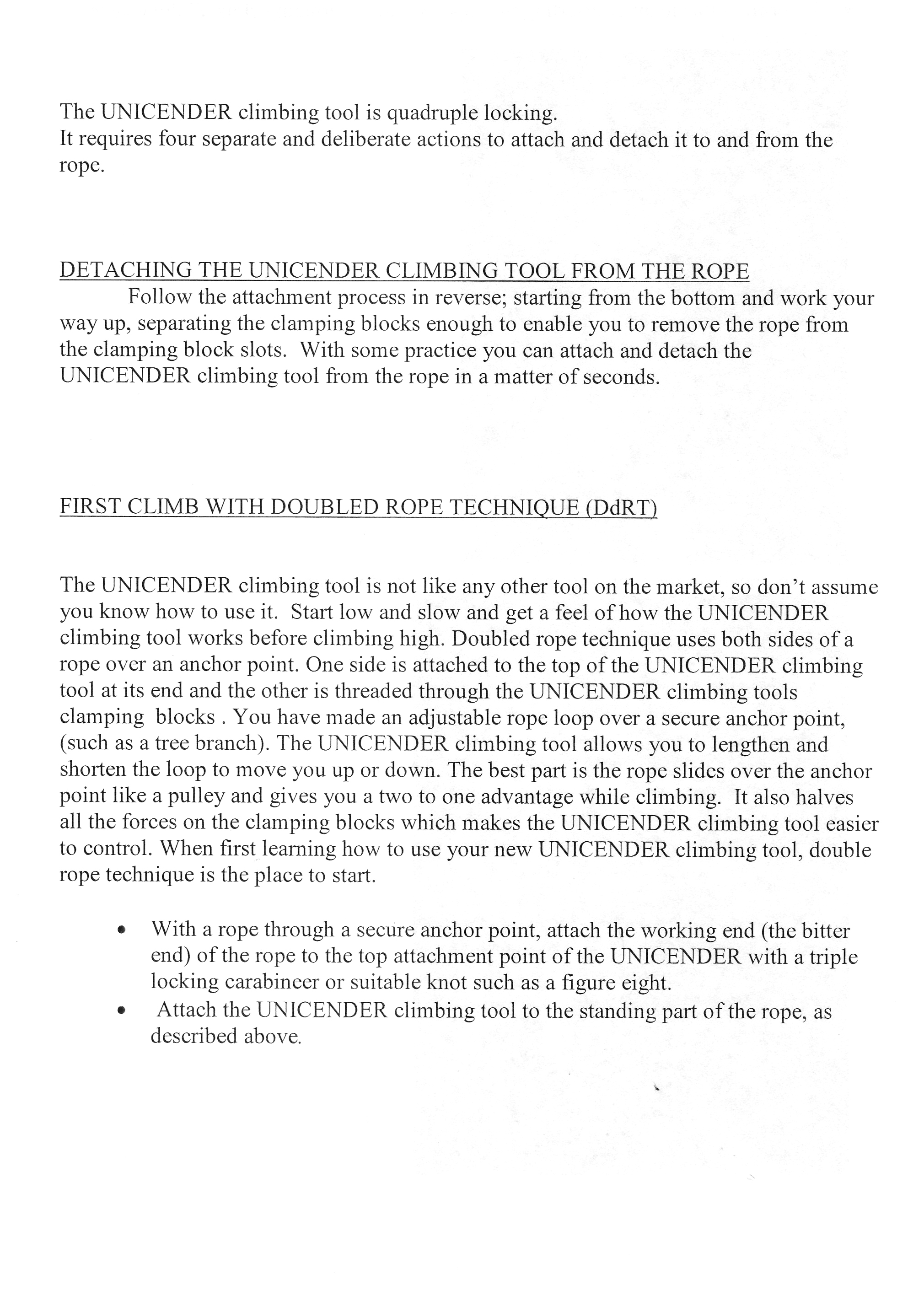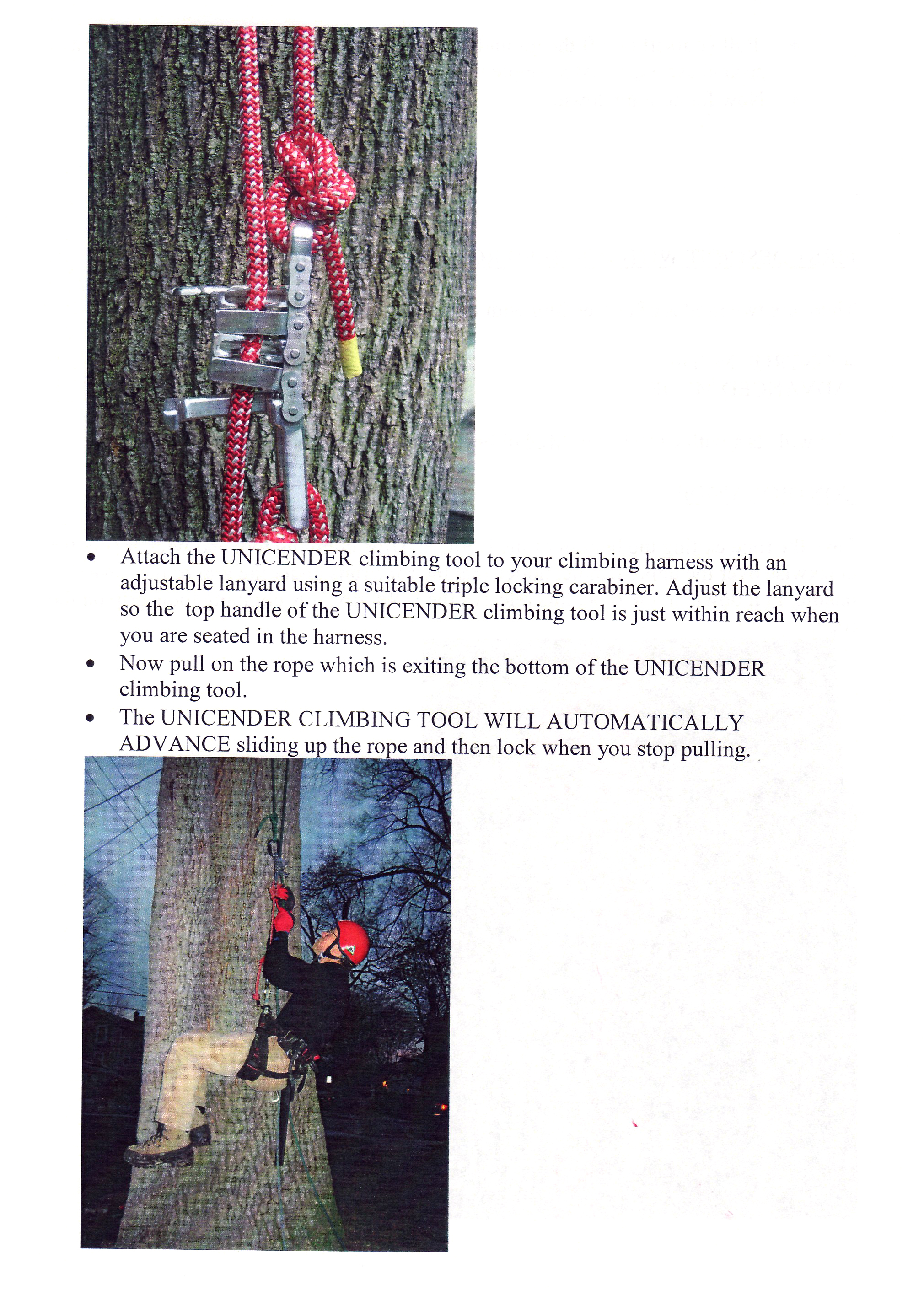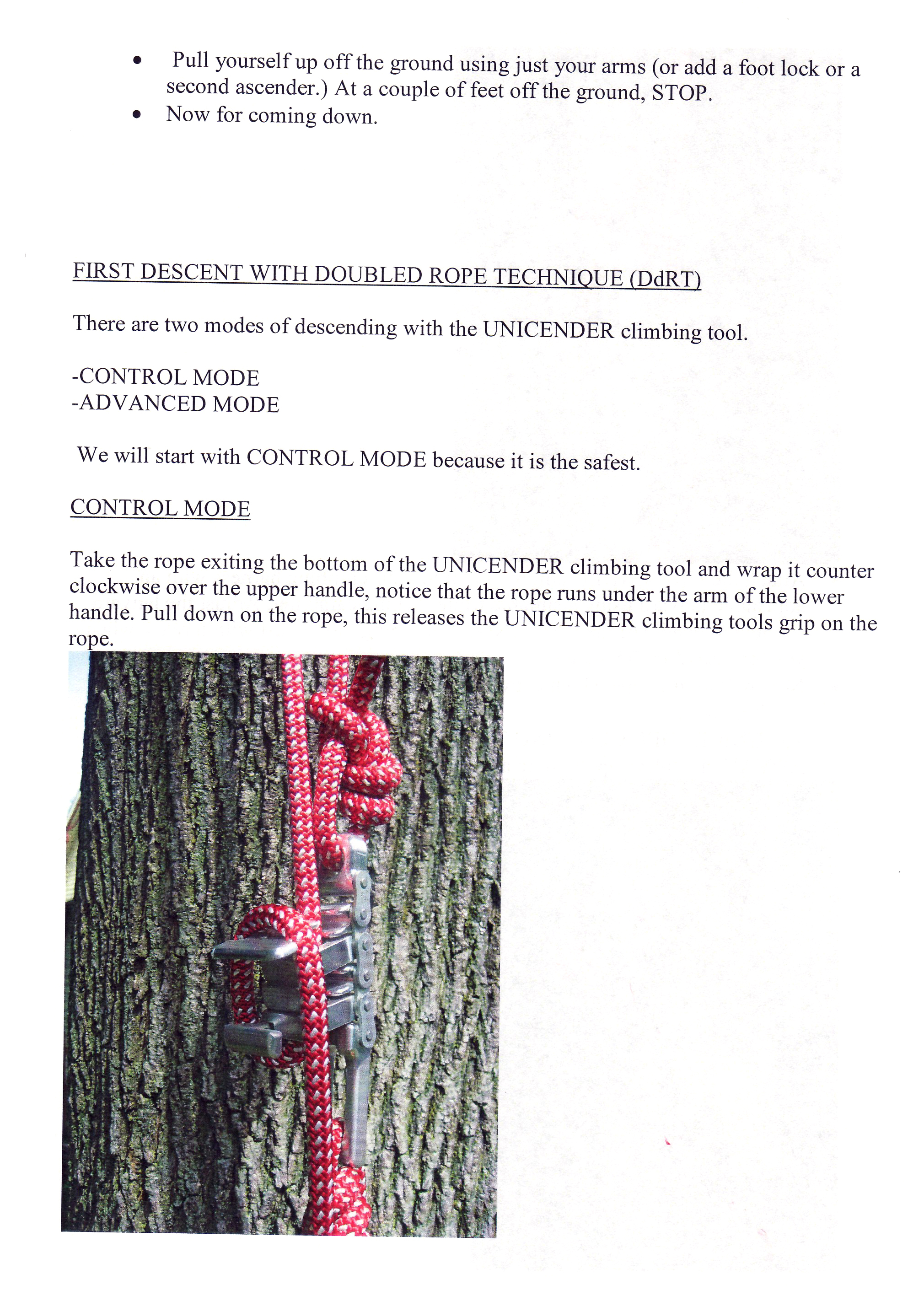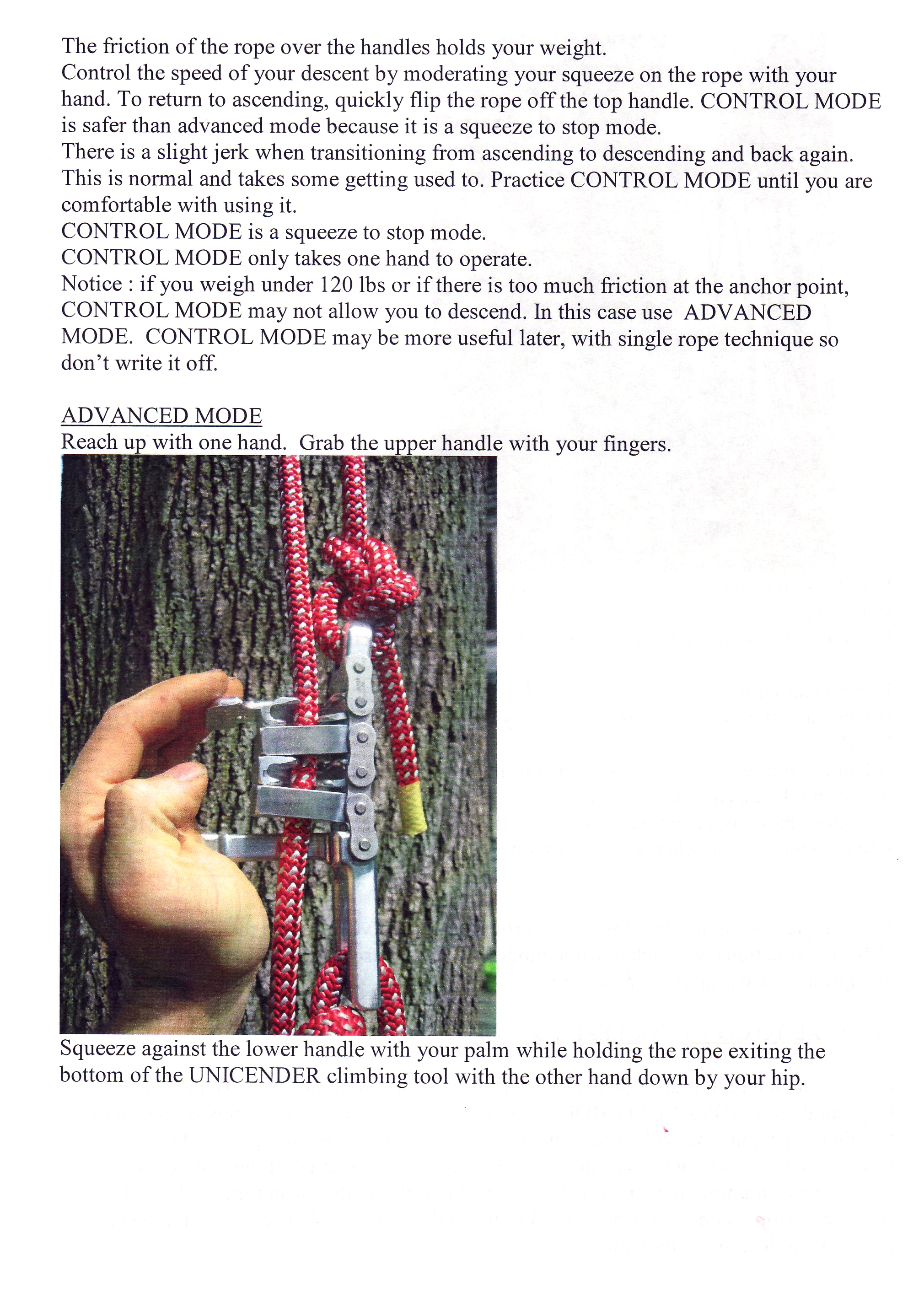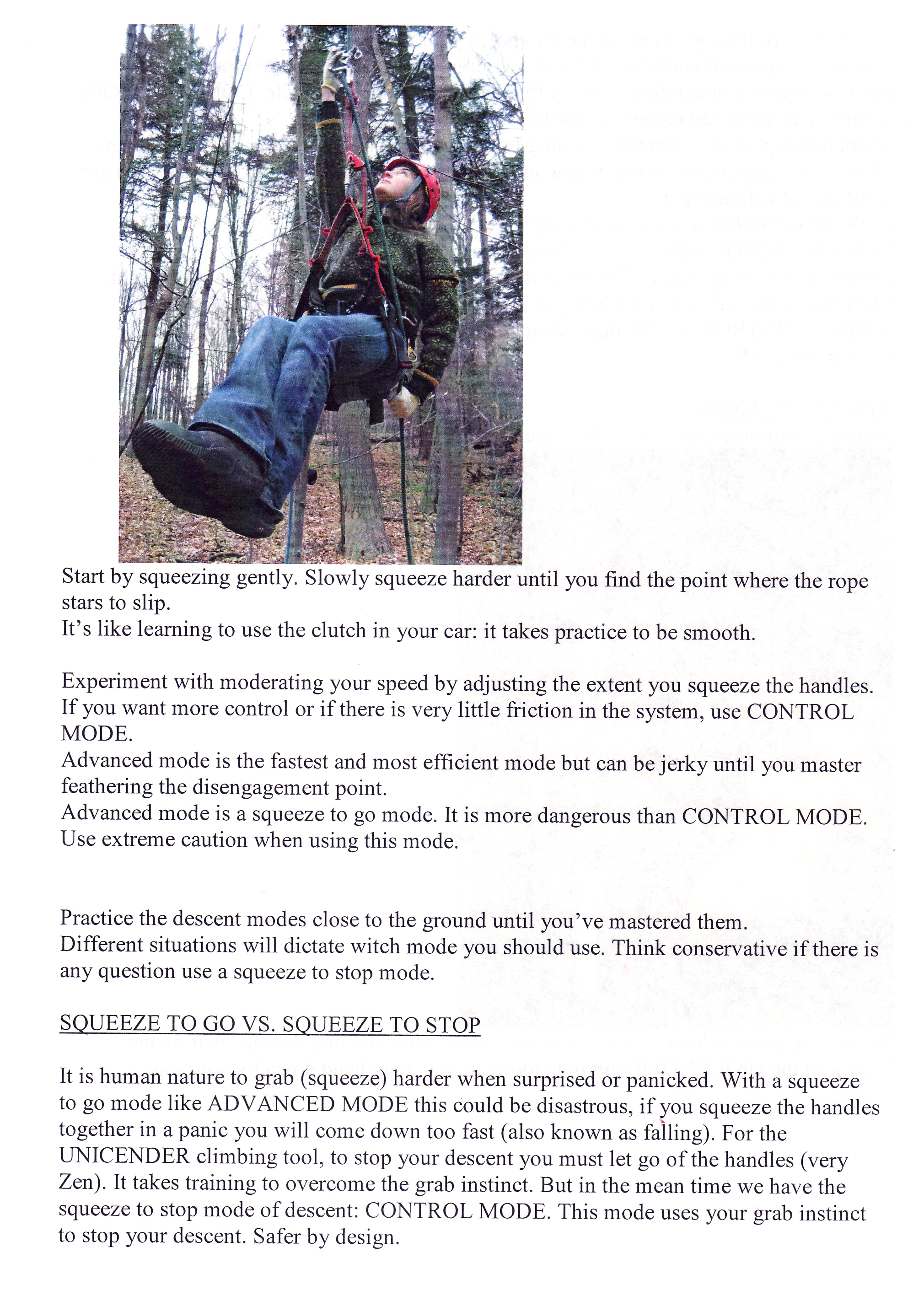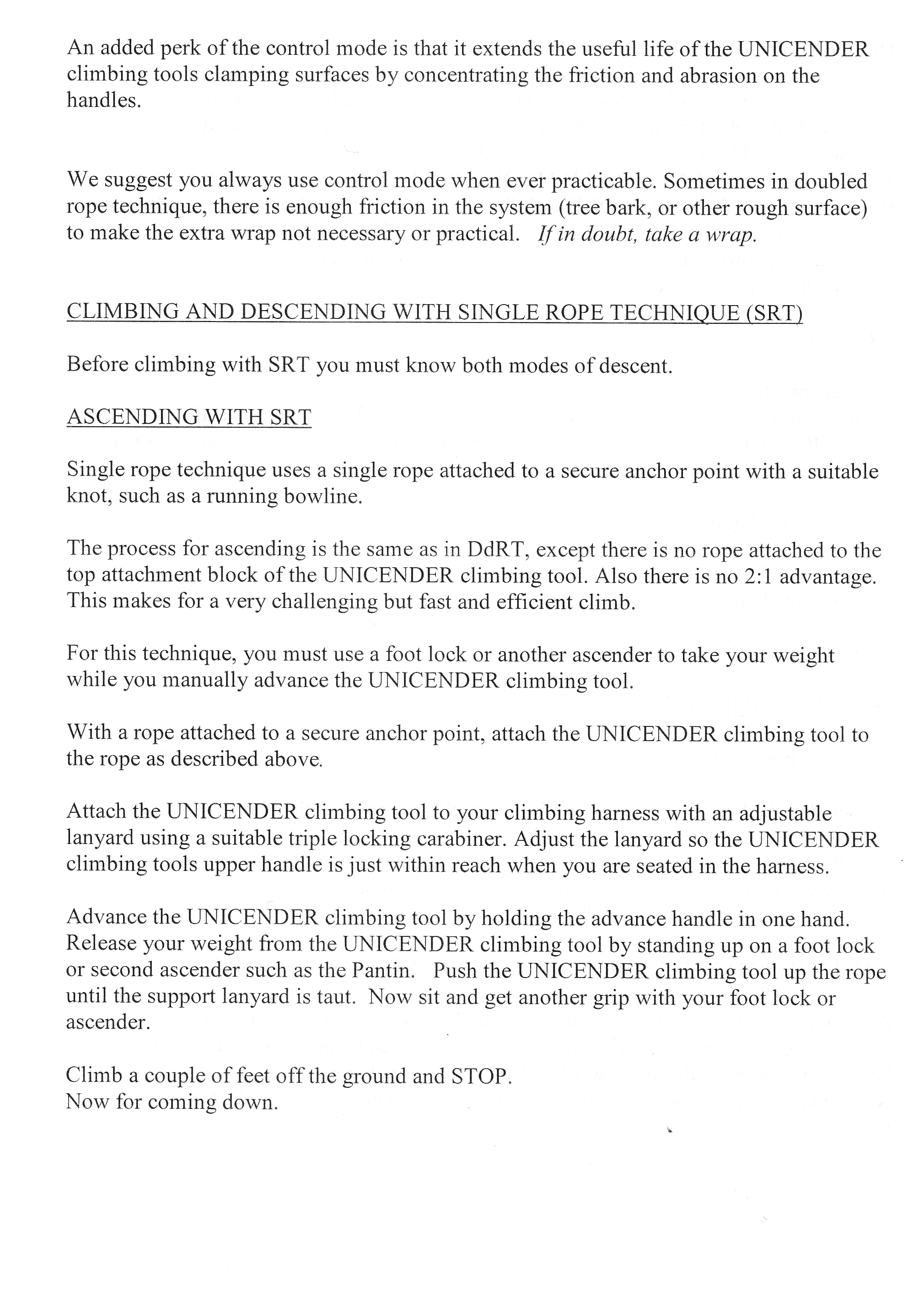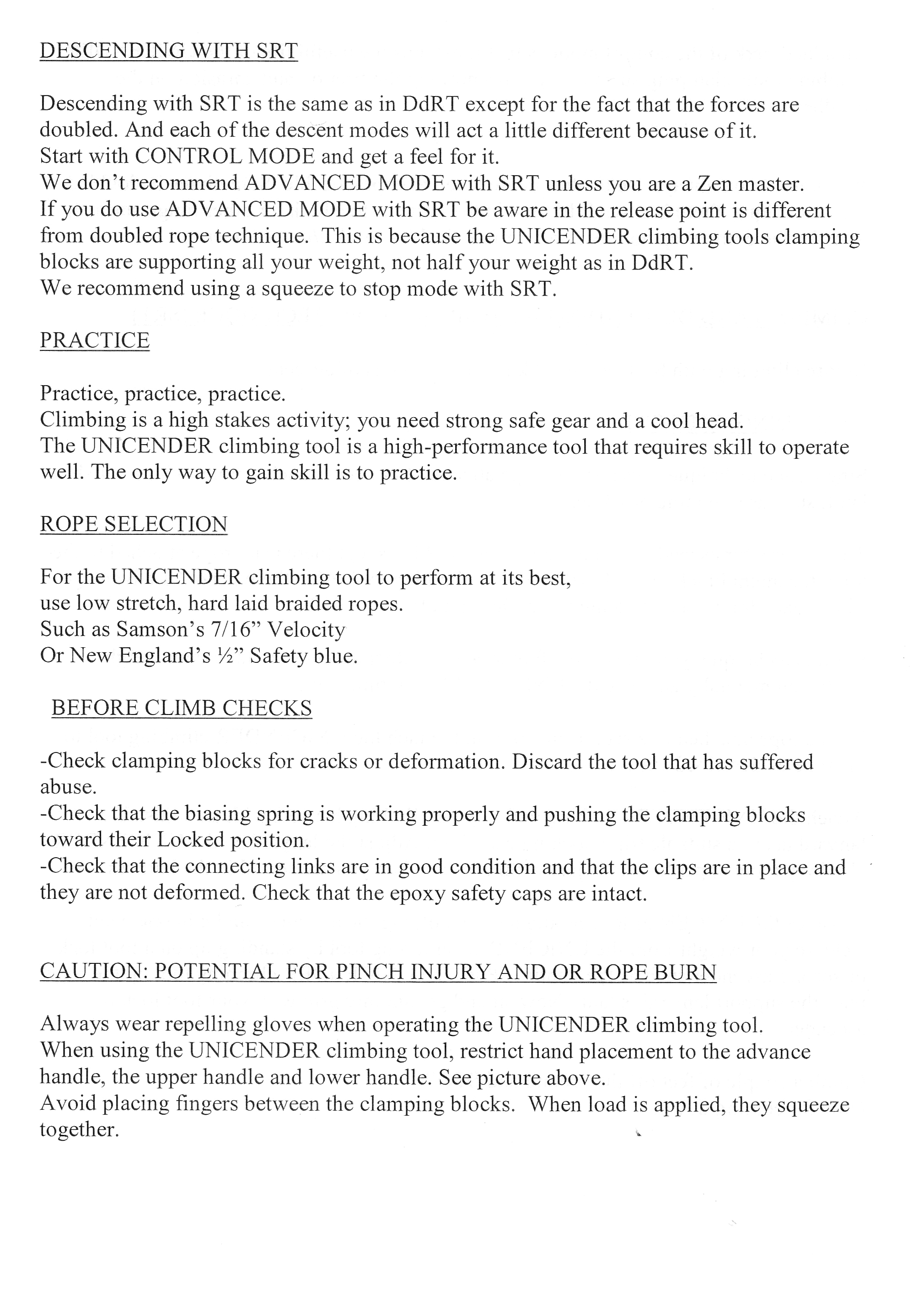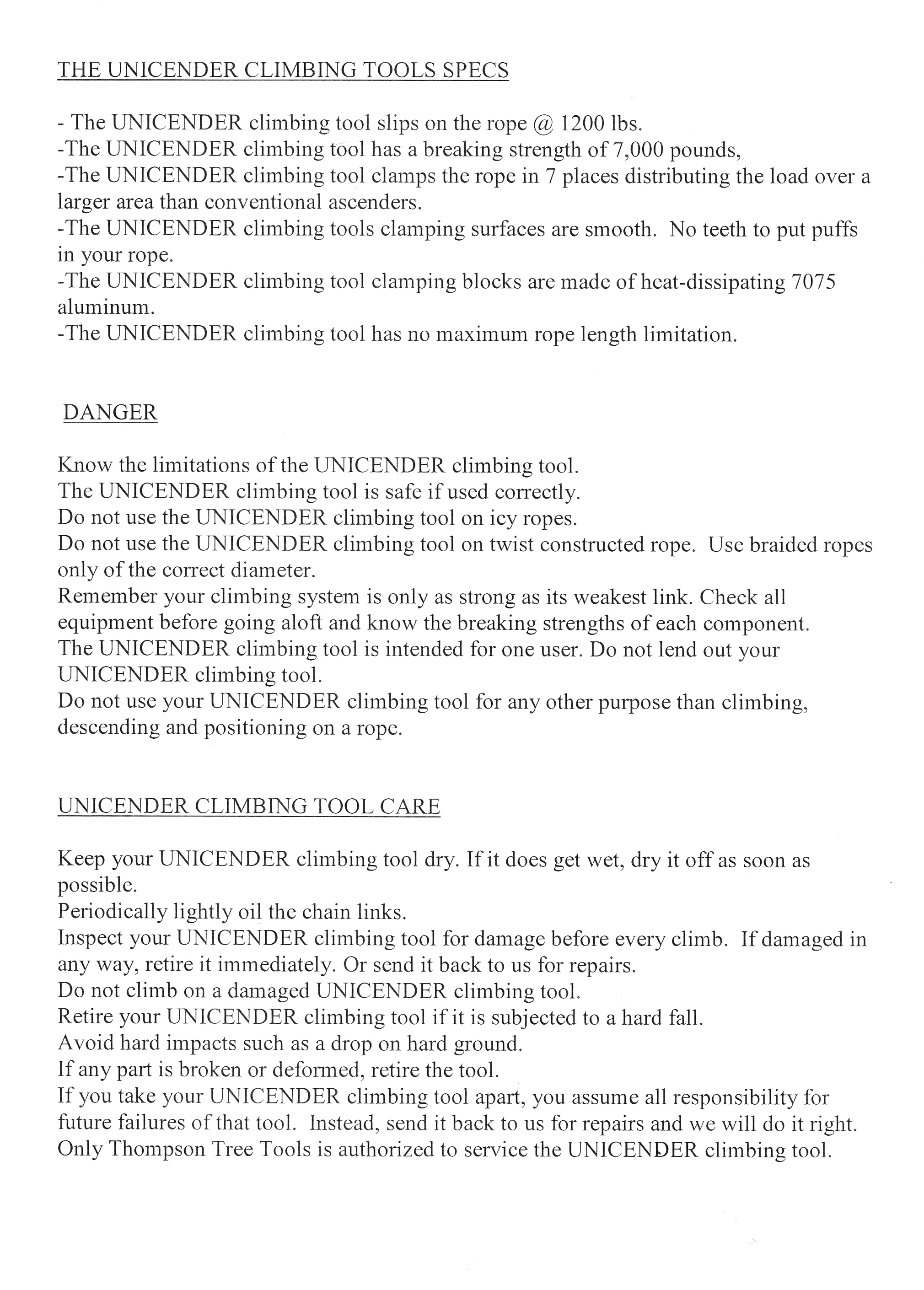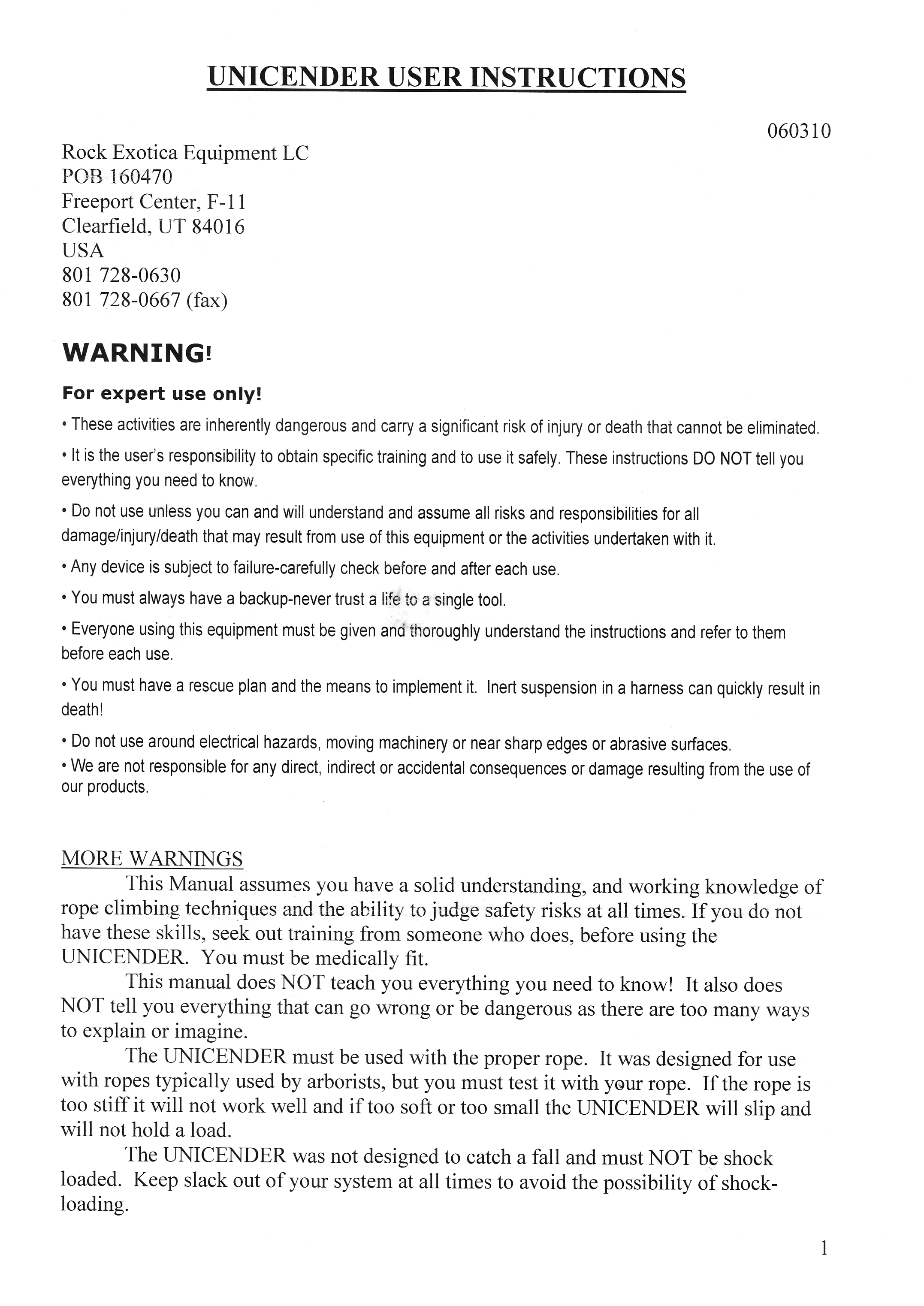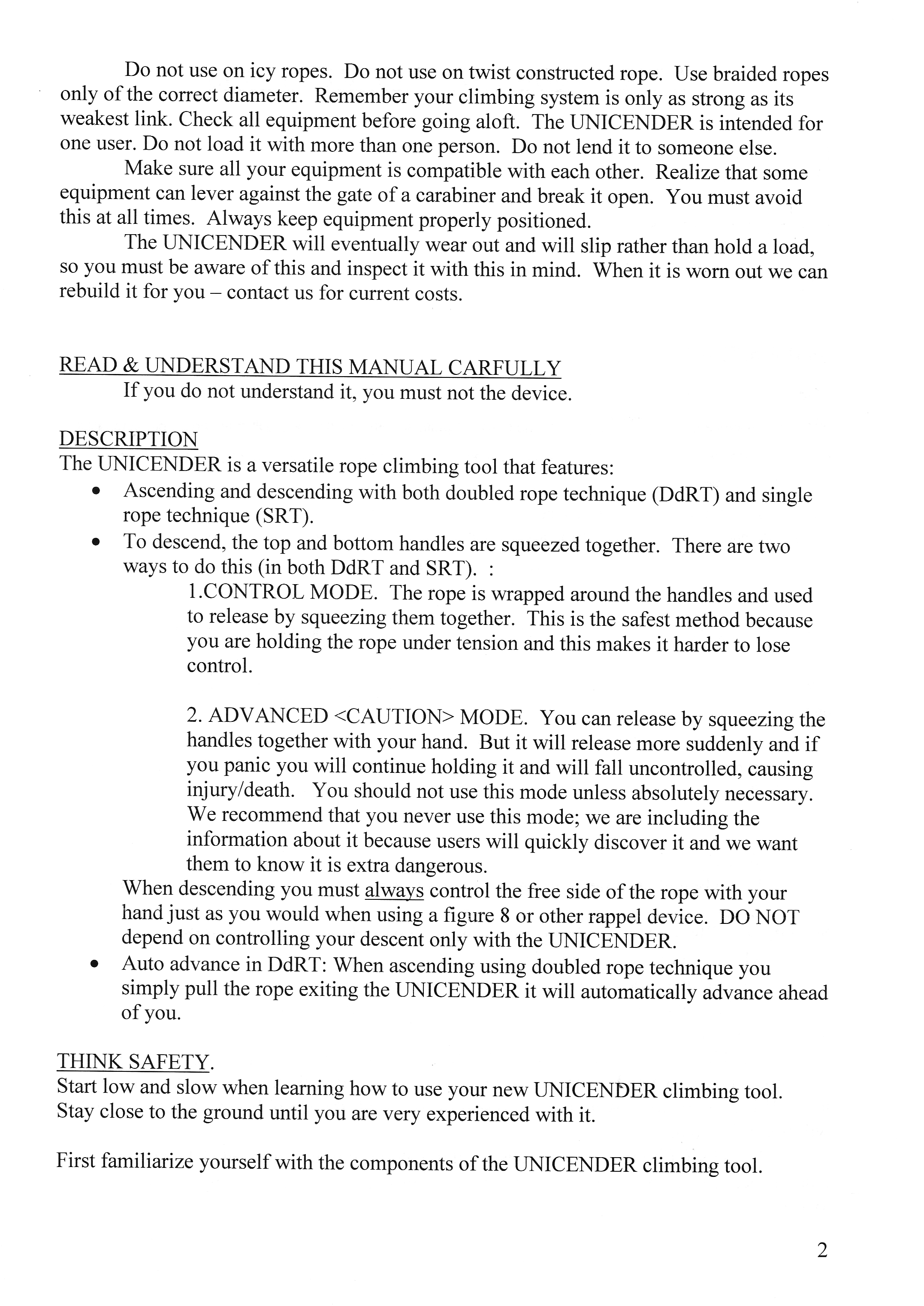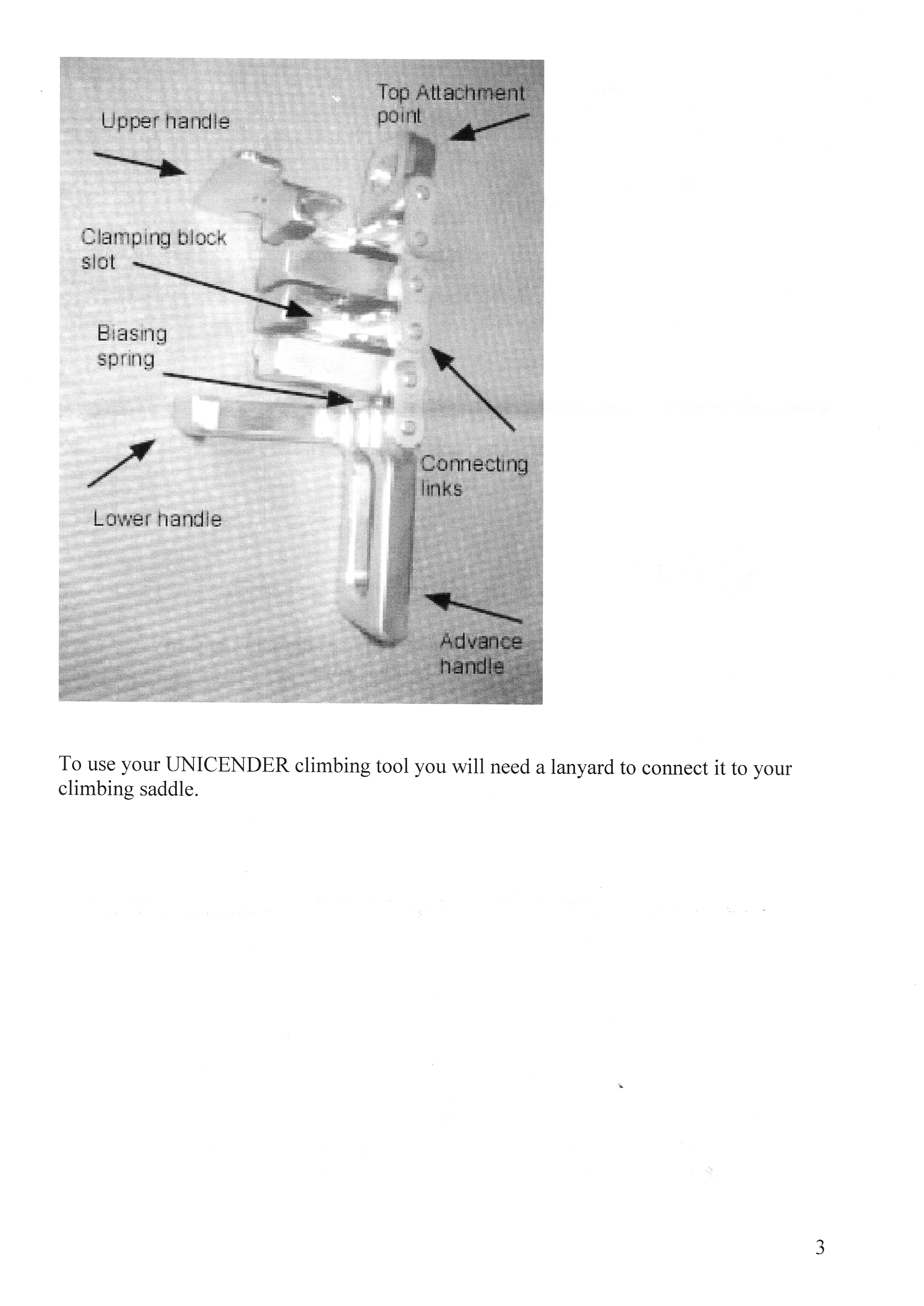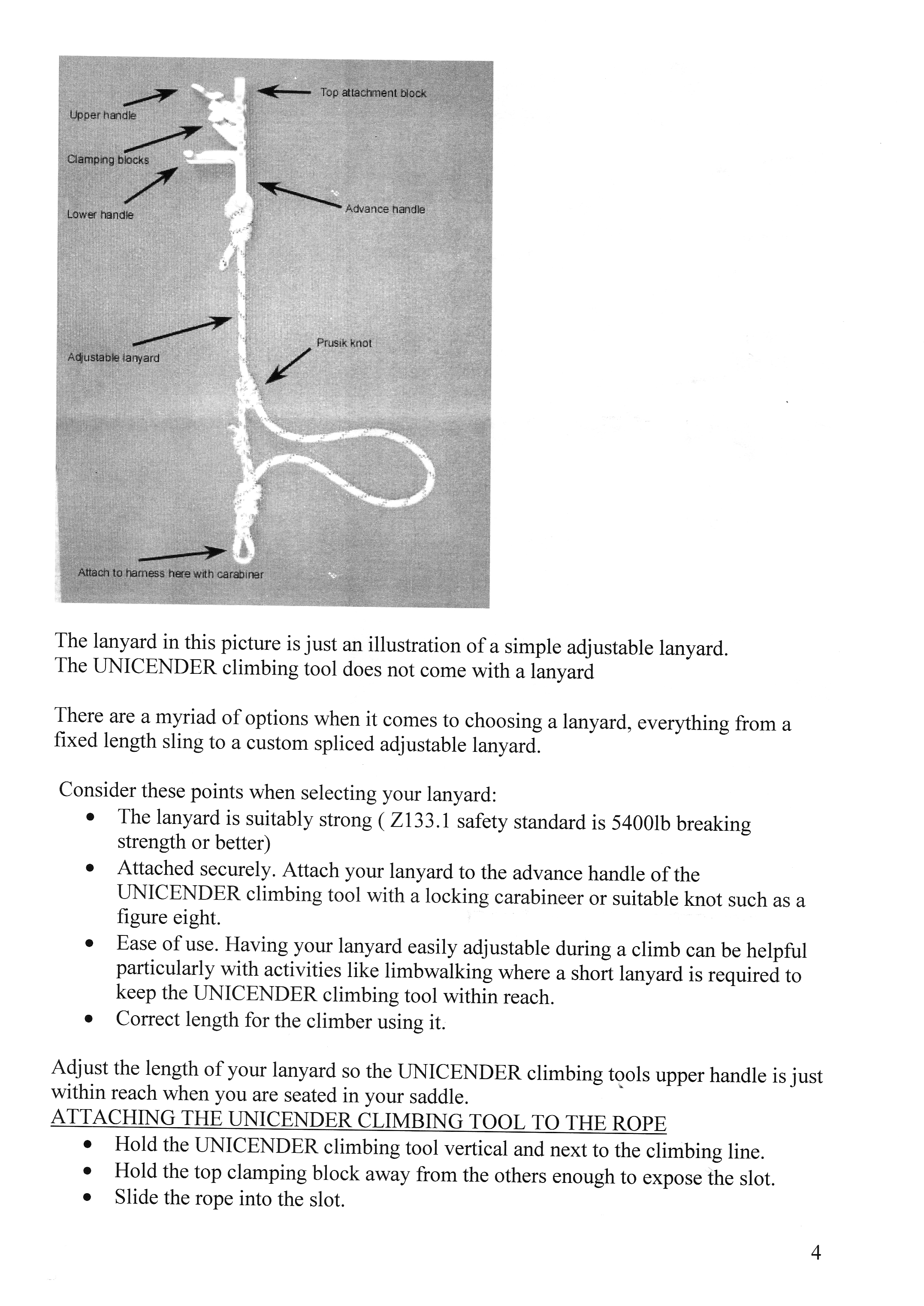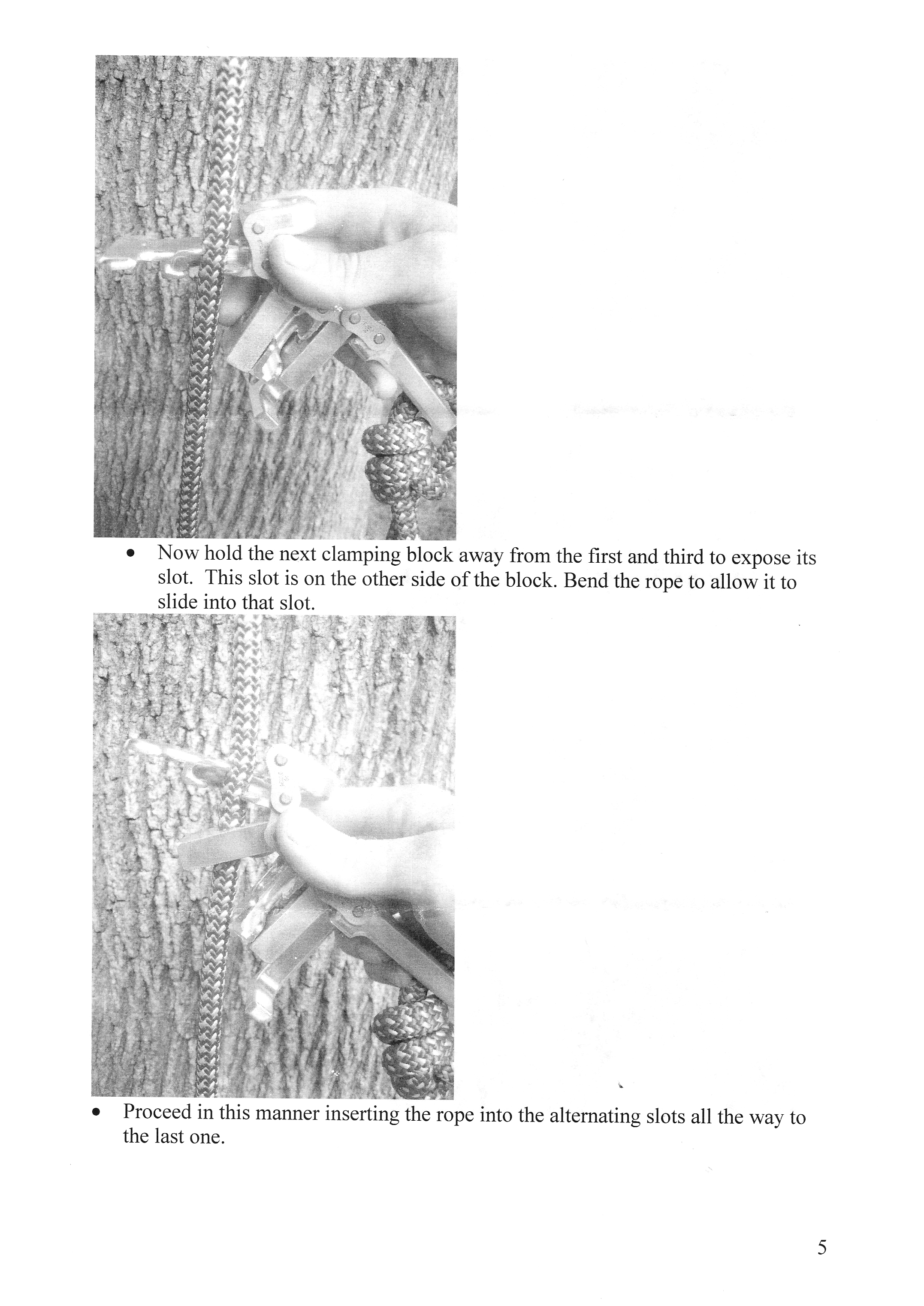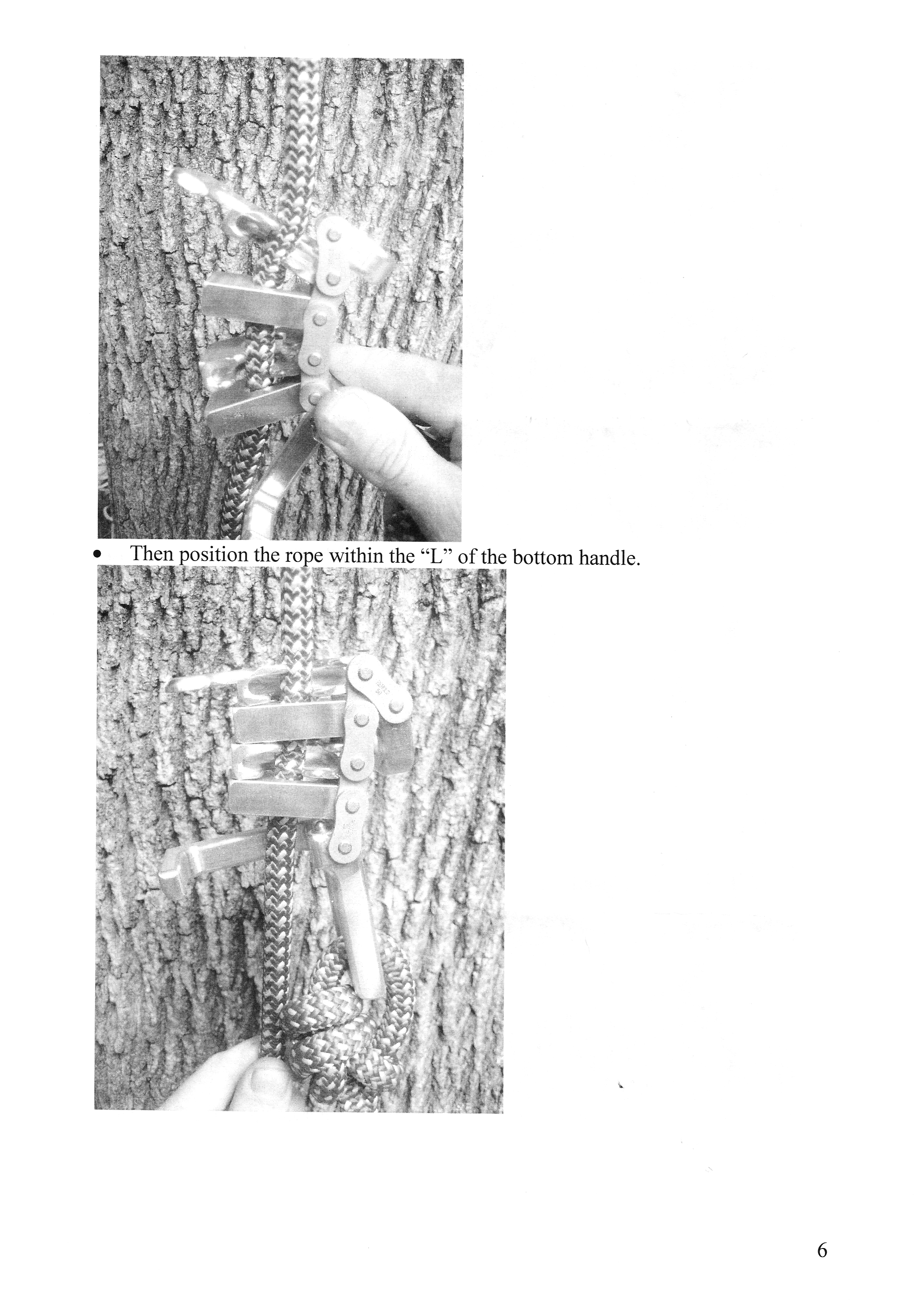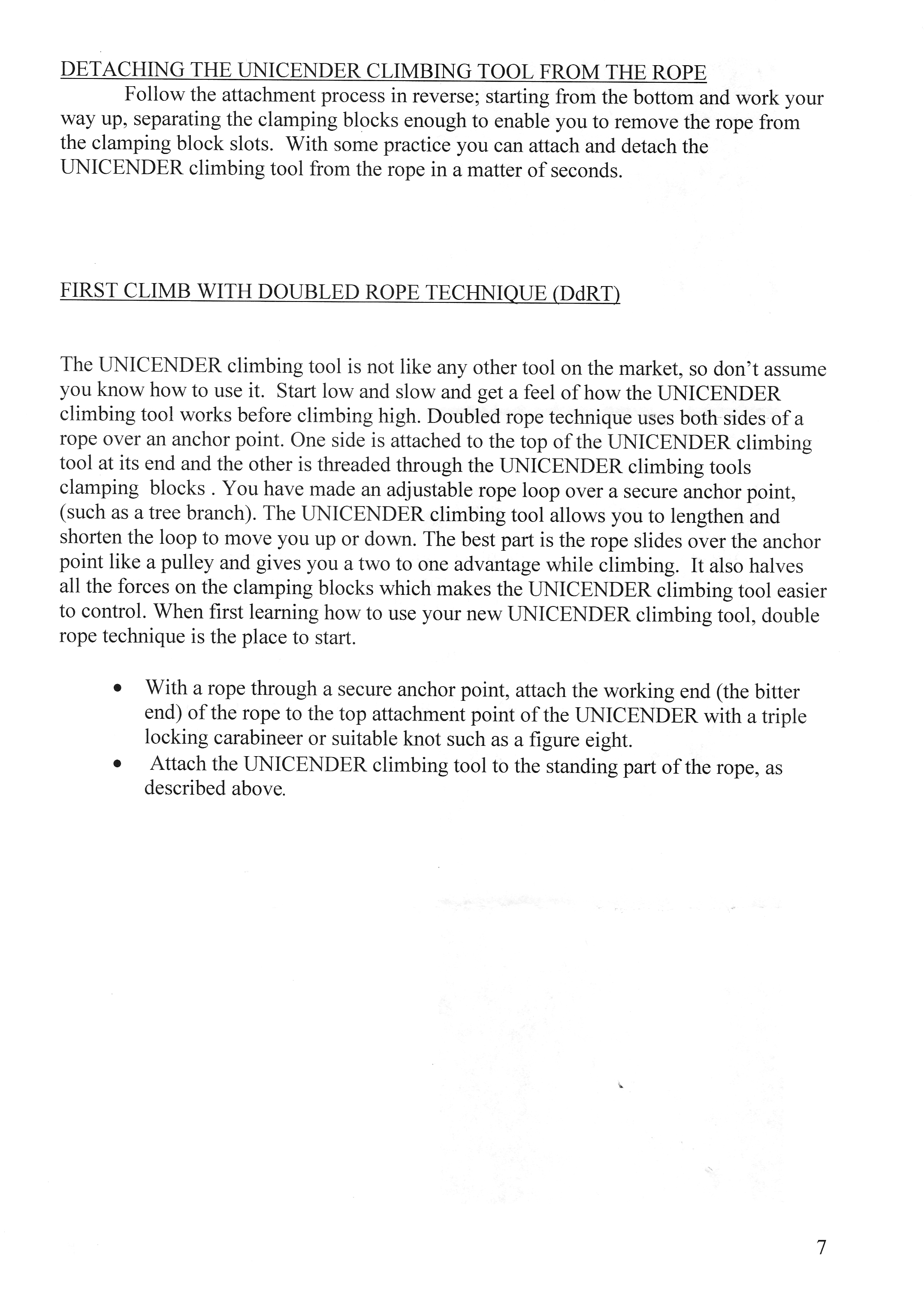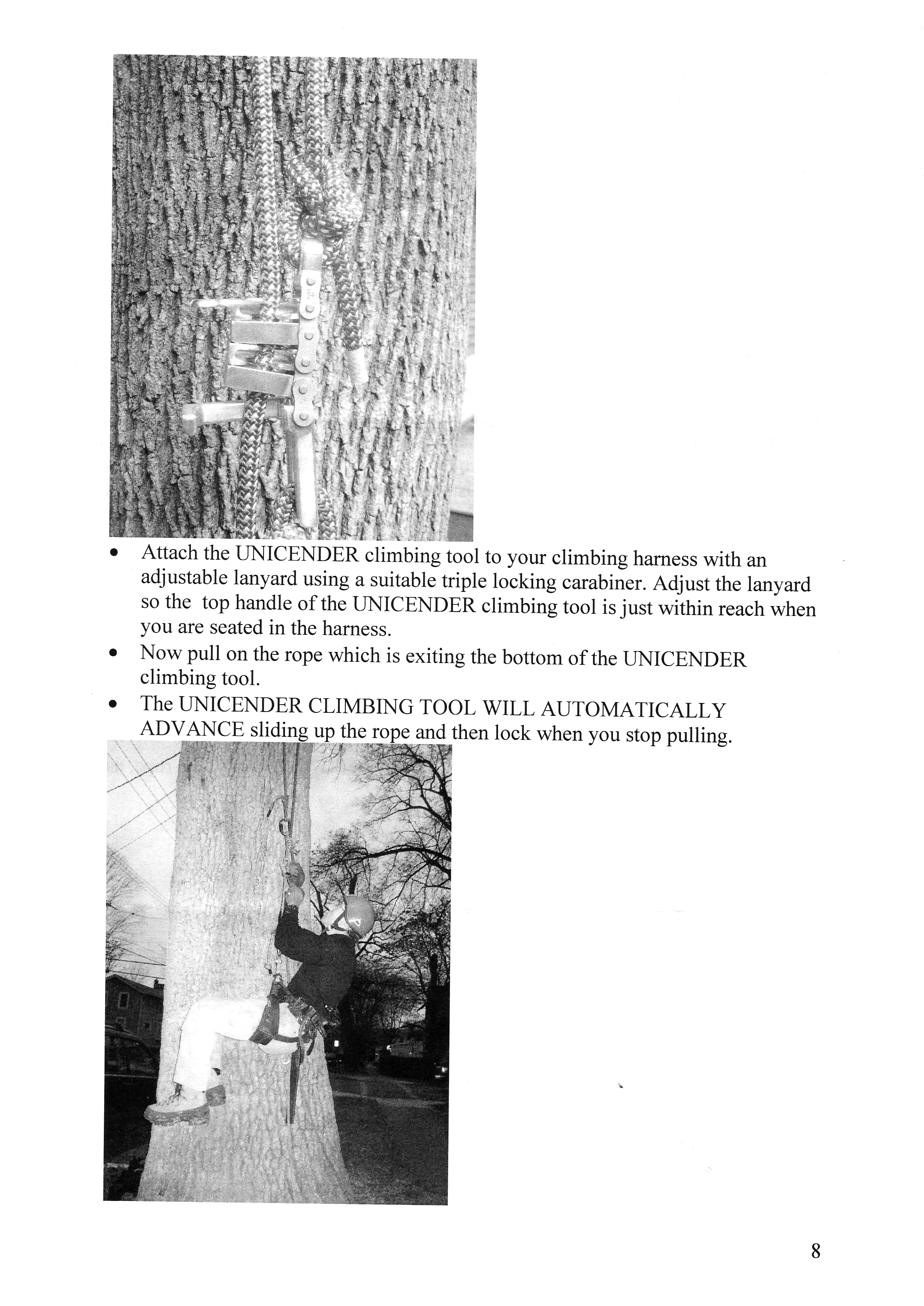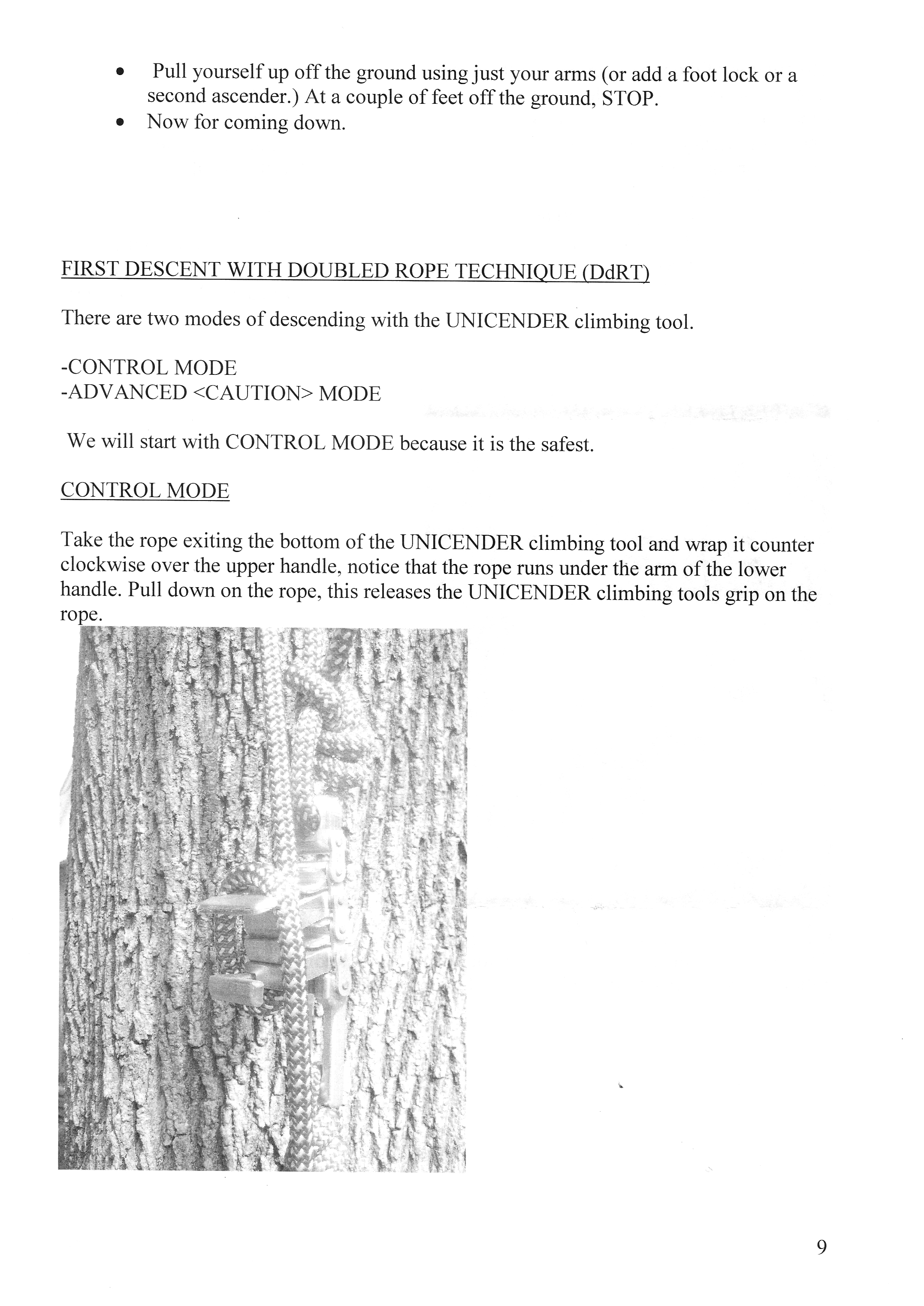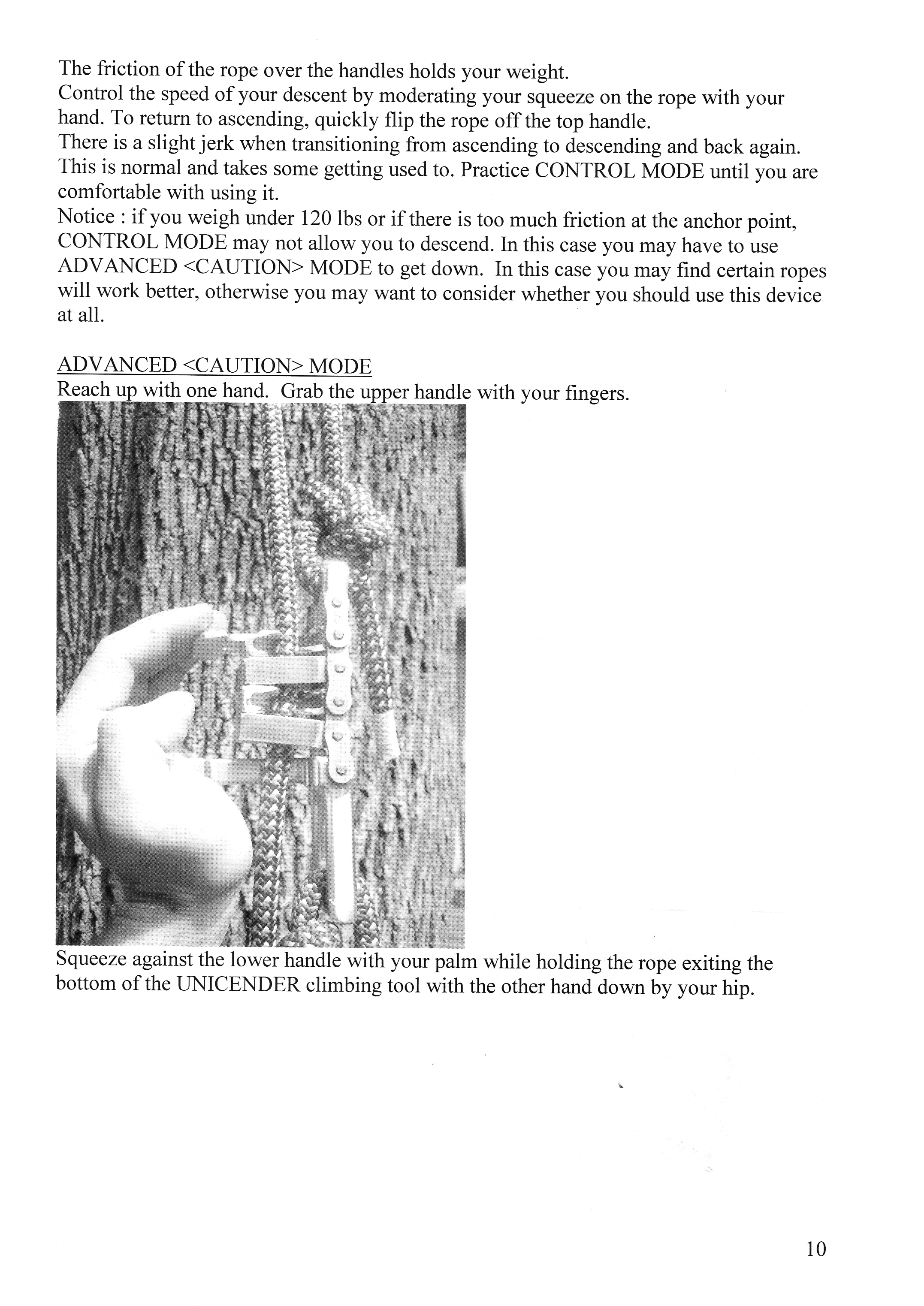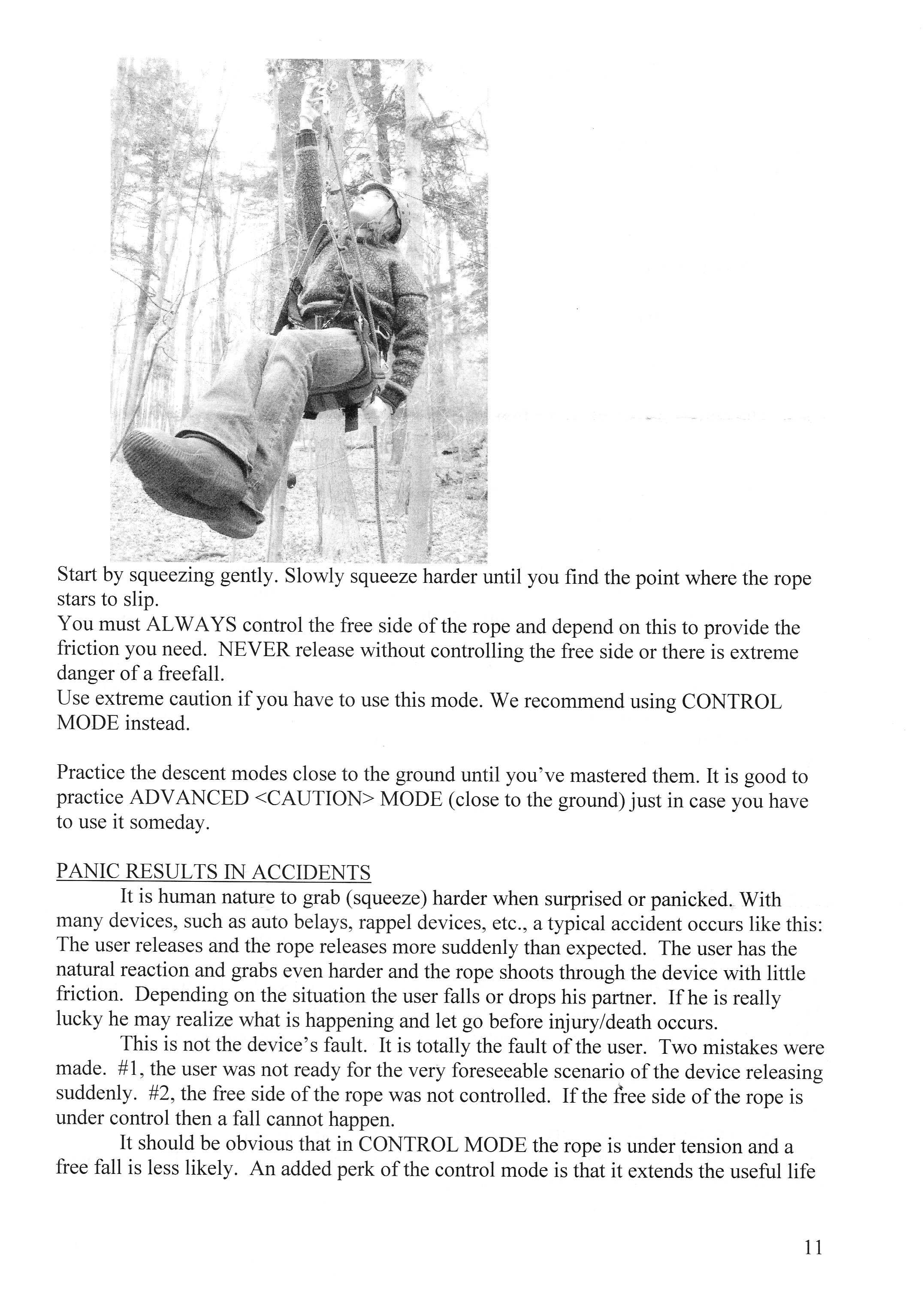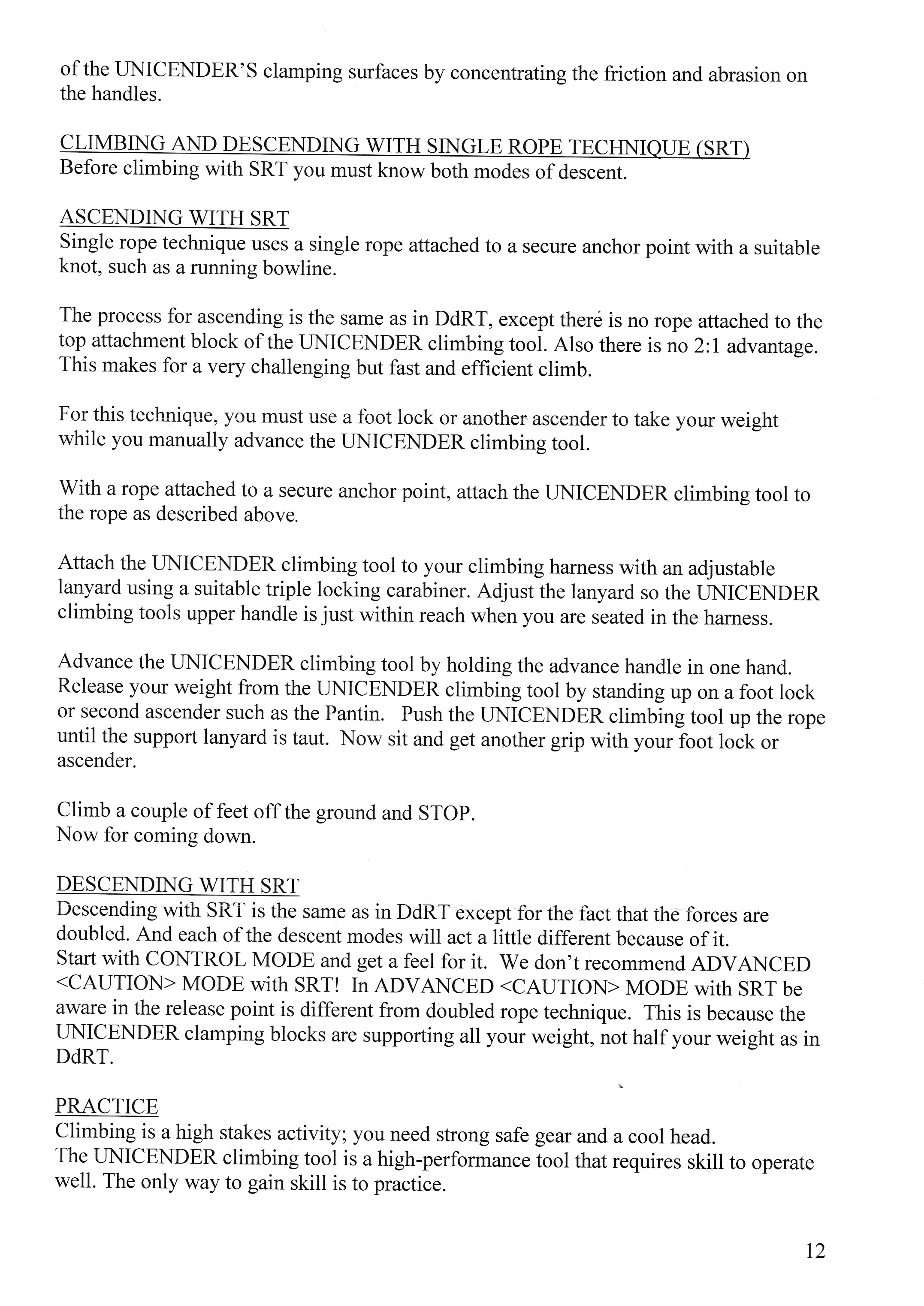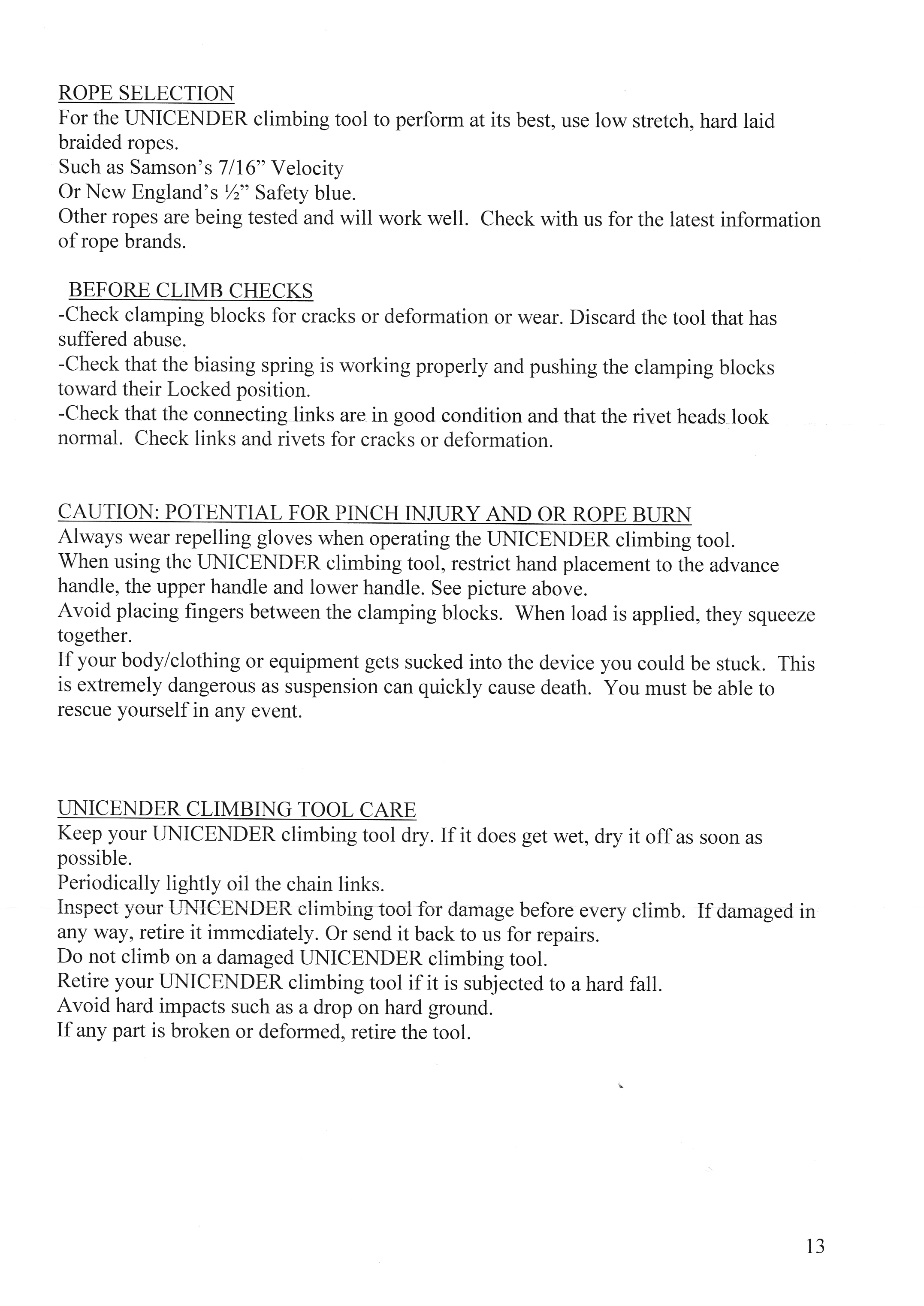Overview
[ Top
| Version C
| Version D
| Version E
| Return to Misc. Ascenders
]
Version A
(#186)
Technical Details
Morgan Thompson donated this Unicender in 2005.
The Unicender is made from six pieces of milled 6061-T6 aluminum
connected by steel links. Each link looks like a bicycle chain
link with a 15.5 mm. pitch and 5 mm. pins between the two sides.
Stainless steel clips on one side engage grooves in the cross
pins, holding the device together. There are six aluminum blocks
Each block is 32 mm. wide and 12.7 mm. thick unless otherwise noted.
From top to bottom, they are as follows:
- The top plate is 35.8 mm. long. It has a 16 mm. hole with edges
beveled/rounded on both sides. This provides a tie-in point for
double rope technique.
- This plate is 75.5 mm. long. There is a 13 mm. wide slot cut
in the right side about 21 mm. from the connecting pin axis. This
slot slopes at 45° downward to the front (away from the pin).
The outer 27 mm. is reduced to 7.5 mm. thickness, and widens to
44.5 mm. This provides a control tab (a.k.a. upper handle).
- This plate is 50.7 mm. long. It has a slot like the second
plate, except the slot opens to the left.
- This plate is a mirror image of the one above: the slot opens to the right.
- This plate is similar to the third plate except that the
outer 27 mm. taper in thickness to 8.5 mm. This plate is also
spring-loaded upward; none of the other plates have springs.
- The bottom "plate" is actually an L-shaped bracket.
Each arm is 12.7 mm. thick. The horizontal arm (a.k.a. lower handle)is 77 mm. long and
ends in side ears giving a total width of 64 mm. A 14 mm
central slot is cut the length of the arm and beveled on the
top and bottom. The vertical arm is 76.2 mm. high and features a 52 by 16 mm
beveled slot. This is the main tie-in point.
Version A is 142 mm. tall, 76 mm. wide, 64 mm. thick, and weighs 354 g.
There are no markings on this Unicender.
The Unicender is a very different ascender than the others
on my site. Morgan Thompson designed it for arborists, not cavers
and climbers, and it seems unfair for me to evaluate it as a caving
device. I've received a few emails from arborists impressed with
the device, saying it works very well for both single and double
rope technique. One claims that for SRT, it works very well as
a descender but needs some work as an ascender. He put it in the
95th percentile. I'm not Tarzan (I'm an underworld character instead)
but I can understand and credit these opinions.
When descending, one can control speed by squeezing the top
and bottom handles together. Looping the rope over the lower handle
provides additional friction. The aluminum blocks provide good
heat dissipation.
The clips holding the links together look scary, but they are
not loaded and they are more secure than they look.
The manufacturer provides the following test data:
- Breaking strength: 7000 lb (3200 kg; 31 kN)
- Slippage on 1/2" (12.7 mm.) rope: 1600 lb. (720 kg; 7.1 kN)
- Slippage on 7/16" (11 mm.) rope: 1000 lb. (450 kg; 4.4 kN)
I doubt that the Unicender would make a good caving ascender,
but it was never designed as one. I would be curious to see how
it fares in heavy mud: I think I might be rather surprised. The
manufacturer warns against using it on icy ropes.
Morgan filed for a U.S. patent in 2005 and received U.S. Patent #8,235,172 for the Unicender in 2012.
[ Top
| Version A
| Version D
| Version E
| Return to Misc. Ascenders
]
Version B
(#2280)
Technical Details
I acquired my Unicender, Version B in 2017 as part of Bob Thrun’s collection.
Version B is 141 mm. tall, 76 mm. wide, 64 mm. thick, and weighs 356 g.
Version B has a rubbery plastic coating over the link retaining clips helps hold them in place.
There are no markings on this Unicender.
Apparently I wasn't the only one who thought the clips holding the links together looked scary, or maybe some came loose. Whatever the reason, the rubbery plastic coating was added to help hold them in place.
[ Top
| Version A
| Version D
| Version E
| Return to Misc. Ascenders
]
Version C
(#1534, 2281)
Technical Details
I acquired my Unicender, Version C from Morgan Thompson in 2010. I acquired another in 2017 as part of Bob Thrun’s collection.
Version C is 144 mm. tall, 76 mm. wide, 64 mm. thick, and weighs 361 g.
There are two significant changes in Version C:
- The notches in the four central aluminum block are machined to receive a 1/8" (3.2 mm.) phosphor bronze wire. This wire is more abrasion-resistant than the 6061-T6 aluminum used for the blocks.
- The distal end of the lower handle is thinned.
My Version C is stamped with the serial number "12-4."
Morgan wrote the following comments on this model:
The bronze model was in response to the 6061 T6 aluminum clutches on the original version wearing.
The insert was made of 0.125 inch phosphor bronze spring wire bent into a horseshoe shape that was received by a pocket in the 6061 T6 aluminum clutch block.
The only problem with this model was that it was a pain to machine.
[ Top
| Version A
| Version C
| Version E
| Return to Misc. Ascenders
]
Version D
(#1522)
Technical Details
I acquired my Unicender, Version D from WesSpur Tree Equipment in 2010.
Version D is 144 mm. tall, 76 mm. wide, 50 mm. thick, and weighs 306 g.
There are several significant changes in Version C:
- The aluminum alloy was changed to 7075.
- The top tab is thinner to reduce bulk. It also has a small hole in it that may be a manufacturing aid.
- The control handle has a new shape. Instead of the old slotted "T" shape, the new design is Γ-shaped. The lateral ears were eliminated.
- The four central plates have a new shape with top and bottom rims, eliminating the phosphor bronze inserts.
- Various edges are now well-rounded.
My Version D is stamped "1199."
Morgan wrote the following about this version:
The new model is made of 7075 aluminum which has good wear characteristics and
is a joy to machine. The new design is geared towards ease of production.
[ Top
| Version A
| Version C
| Version D
| Return to Misc. Ascenders
]
Version E
(#1546, 2286)
Technical Details
I acquired my Unicender, Version E from Hanny Piltz in 2011. I acquired another in 2017 as part of Bob Thrun’s collection.
Version E is 155 mm. tall, 76 mm. wide, 51 mm. thick, and weighs 310 g.
Version E is produced by Rock Exotica. Here are the key differences:
- The aluminum parts retain the same shape as in Version D (except the small hole in the top tab is gone), but they are now anodized.
- The links appear to be fabricated specifically for the unicender rather than using standard (generic) steel links.
- Rivets replace the pins and clips.
One side of the lower piece is printed with "rock exotica" and the Reading-is-Dangerous icon.
The rivets should relieve any concerns about the Unicender disintegrating while I'm on rope.
[ Top
| Version A
| Version C
| Version D
| Version E
]



